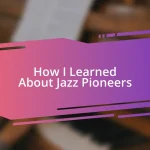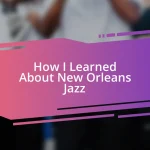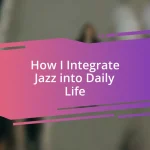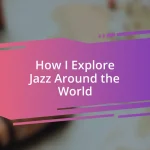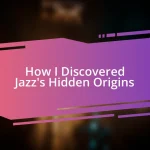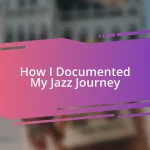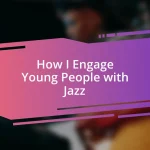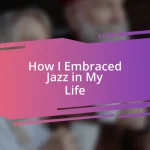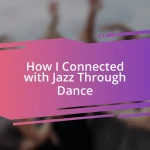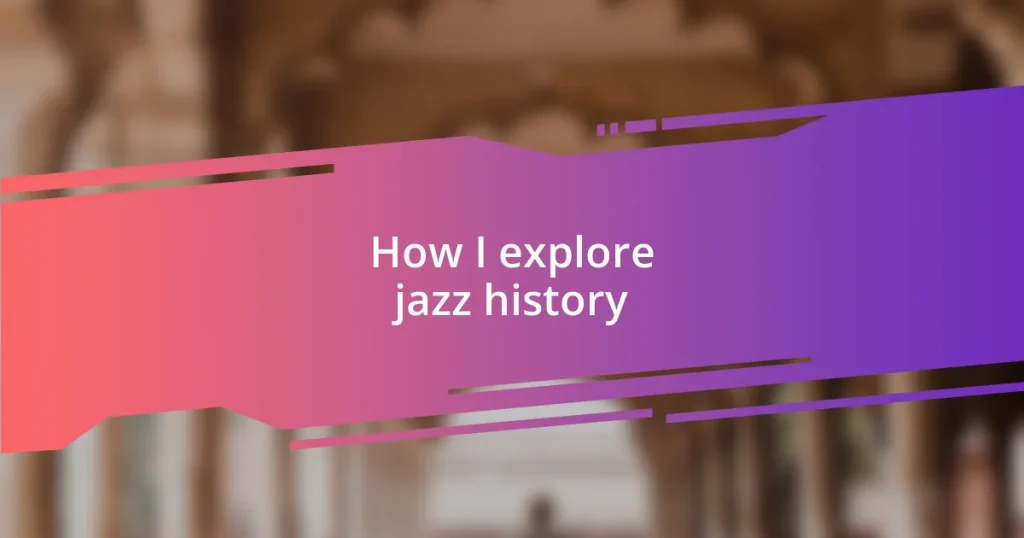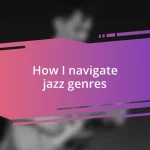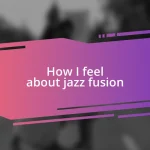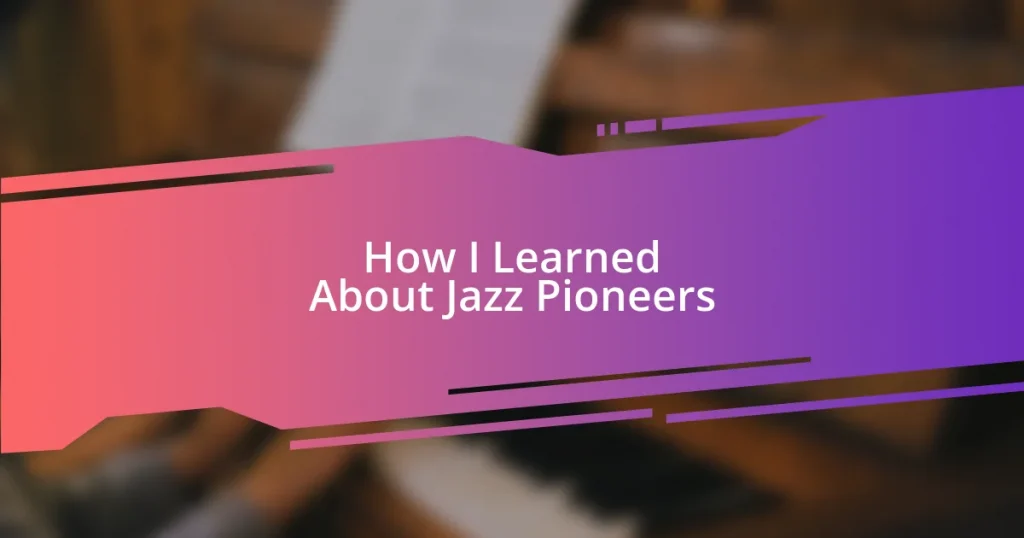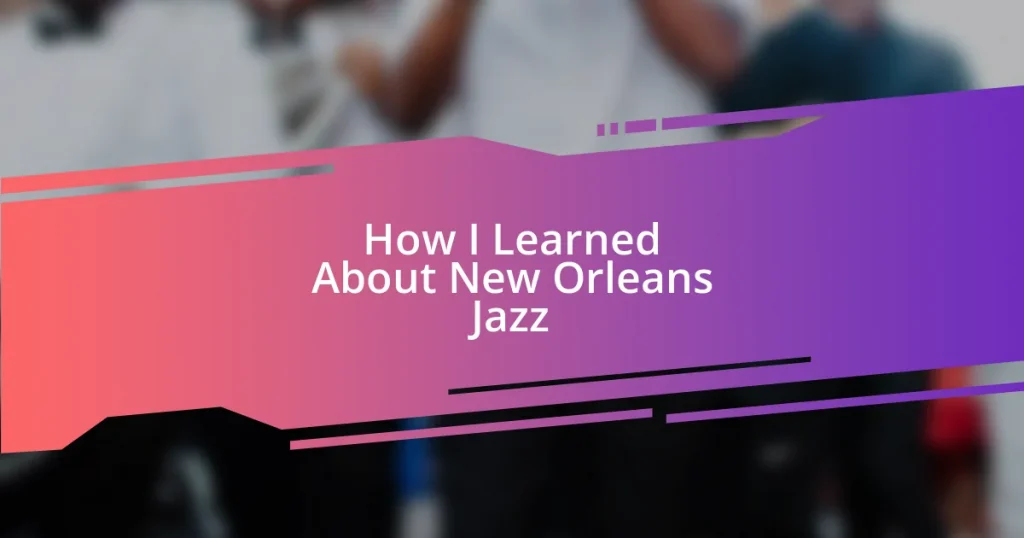Key takeaways:
- Jazz originated in New Orleans in the early 20th century, blending African, European, and local musical influences, reflecting the African American experience.
- Key figures like Louis Armstrong, Duke Ellington, and Charlie Parker greatly transformed jazz, each contributing unique styles and pushing musical boundaries.
- The evolution of jazz includes significant movements such as bebop, modal jazz, and free jazz, which challenged traditional forms and expanded artistic expression.
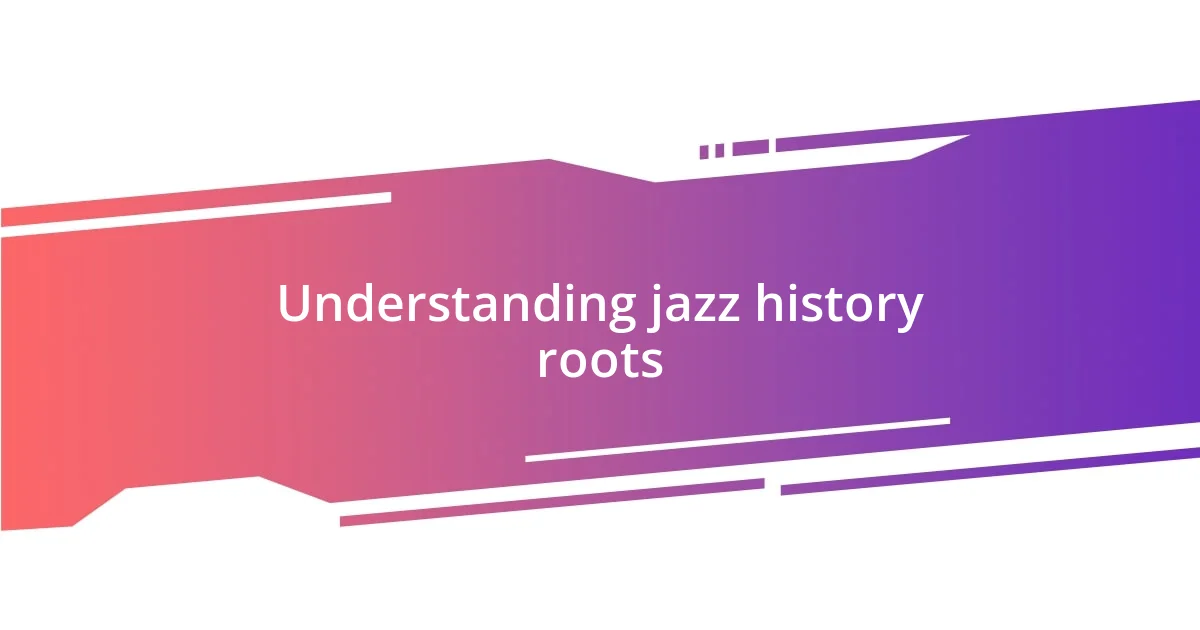
Understanding jazz history roots
Diving into the roots of jazz history is like peeling back layers of a rich, textured tapestry woven from diverse cultural threads. I remember my first encounter with the vibrant rhythms of New Orleans jazz; it struck me how deeply the music resonated with the city’s unique blend of influences, from African rhythms to European harmonies. Each note seemed to tell a story about resilience and celebration, a reflection of the African American experience.
As I researched, I found it fascinating that jazz emerged around the turn of the 20th century, largely in the African American communities of New Orleans. This city was a melting pot, where blues, ragtime, and brass band music coalesced to form something entirely new. Isn’t it incredible how music can serve as a voice for social change? This interplay of styles not only birthed jazz but also highlighted the cultural dialogues that continue to shape it today.
Jazz grew not just from its musical foundation but also from the heart of the communities that embraced it. I often think about how emotional expression in jazz mirrors the human experience. For example, the improvisational nature of jazz allows artists to convey personal struggles and joys, making each performance a unique reflection of life itself. How often does a song remind you of a pivotal moment in your own journey? That’s the power of jazz—it connects us across time and space.
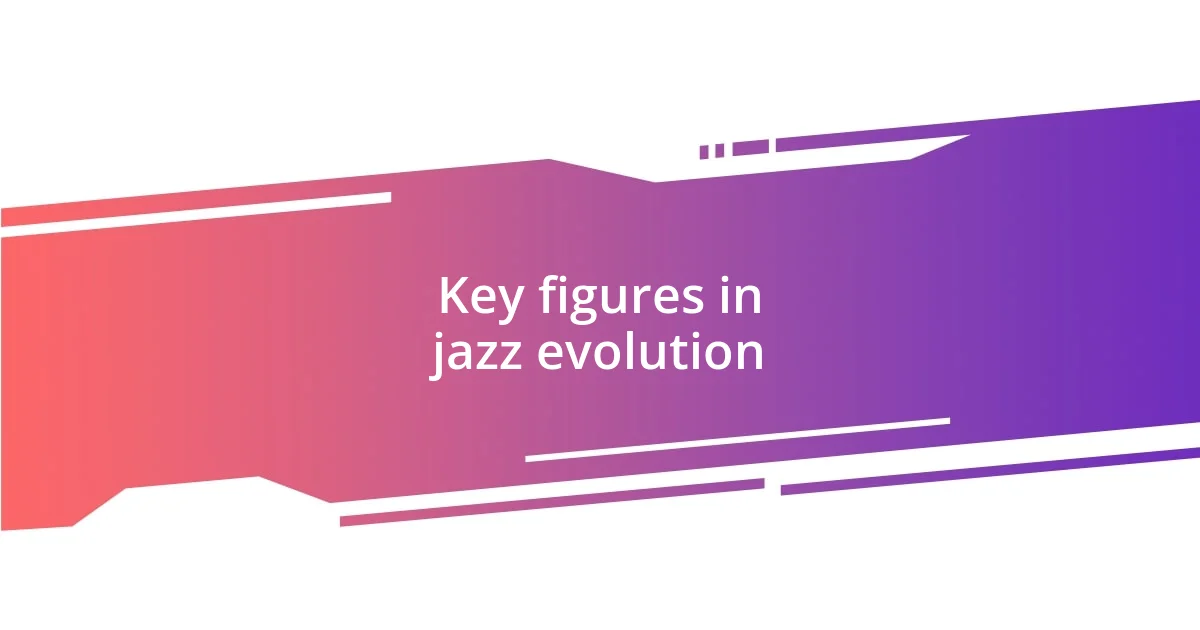
Key figures in jazz evolution
Jazz has been shaped by many brilliant figures whose contributions transformed it into the art form we celebrate today. For instance, Louis Armstrong wasn’t just a phenomenal trumpeter; he was a charismatic performer whose loose, emotive playing brought a new voice to jazz. I’ll never forget listening to his rendition of “What a Wonderful World”—his gravelly voice, coupled with that iconic trumpet, felt like a warm embrace that made me reflect on the beauty of everyday moments.
Another pivotal figure is Duke Ellington, whose orchestral compositions redefined what jazz could be. His ability to blend complex arrangements with improvisation always captivates me. It reminds me of the moments spent in jazz clubs, where musicians creatively riff off each other and elevate the entire ensemble—a true testament to collaboration. Ellington’s music embodies that spirit, with pieces that feel both introspective and grand, inviting listeners to explore the depths of emotion and artistry.
Finally, I can’t overlook the revolutionary influence of Charlie Parker. His avant-garde approach to melody and harmony pushed jazz into new territories. I remember the first time I heard “Ornithology”—the speed, the complexity! It opened my eyes to the limitless possibilities of improvisation, encouraging me to appreciate the spontaneity that defines jazz. These figures, among many others, illustrate the dynamic evolution of jazz and the power of individual expression within a collective narrative.
| Key Figure | Contribution |
|---|---|
| Louis Armstrong | Pioneering trumpet player known for his improvisation and charismatic performances. |
| Duke Ellington | Revolutionized jazz orchestra compositions, blending intricate arrangements with improvisation. |
| Charlie Parker | Advanced the bebop style, showcasing complex melodies and harmonies. |
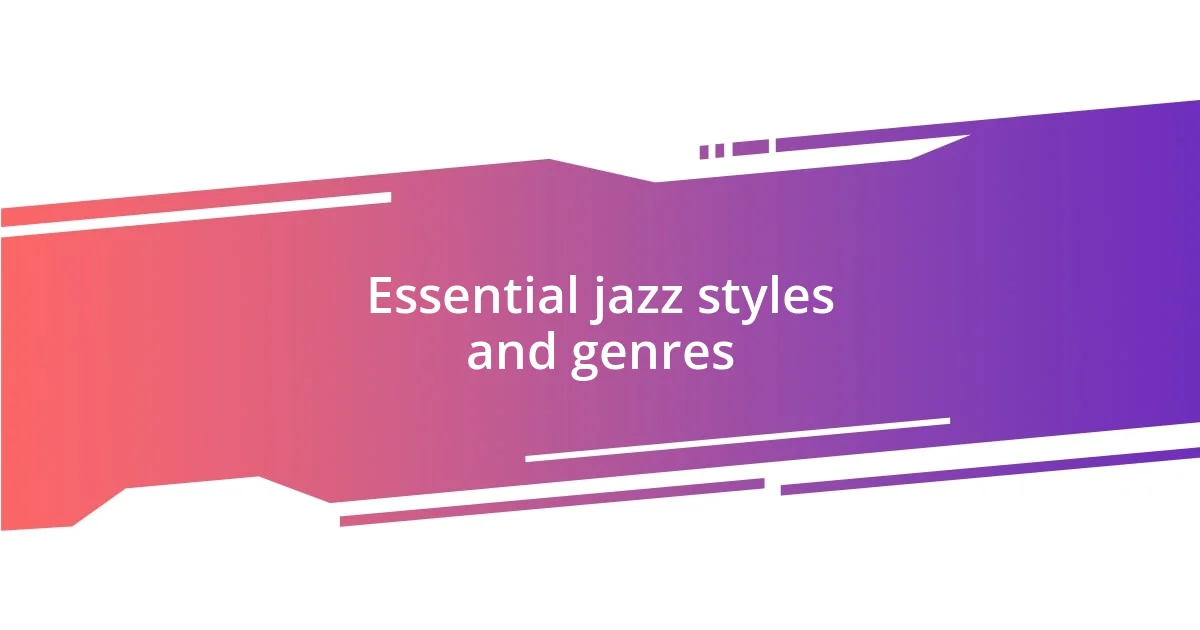
Essential jazz styles and genres
Jazz is a vast world, filled with various styles and genres, each unique yet interconnected. I remember the first time I stumbled into a smoky jazz bar and was swept away by the graceful sounds of bossa nova. The soft sway of the rhythm drew me in, making me feel as if I were on a romantic getaway in Brazil. It’s amazing how genres like this can transport you to places you’ve never been, all through the power of music. The exploration of jazz styles truly shows the diversity and depth of the genre.
Here’s a quick look at some essential jazz styles and their defining traits:
- Dixieland: Originating from New Orleans, known for its upbeat rhythms and collective improvisation, often including brass instruments.
- Bebop: A complex style that emerged in the 1940s, characterized by fast tempos and intricate melodies; it’s like jazz on speed.
- Cool Jazz: A more laid-back approach, developing in the 1950s; it gives off a mellow vibe, perfect for relaxation.
- Free Jazz: This avant-garde movement broke the traditional rules, embracing atonality and spontaneity, revealing the raw essence of expression.
- Fusion: A blend of jazz with rock, funk, or R&B elements; it’s dynamic and innovative, pushing the boundaries of jazz.
Reflecting on these styles, I can’t help but think about how each genre resonates on different levels. For example, when I listen to free jazz, it feels like an emotional release, like watching a painter create on canvas with reckless abandon. It often leaves me feeling both exhilarated and contemplative. That’s the beauty of jazz; it not only entertains but also challenges and inspires, inviting us into a world shaped by historical and cultural influences.
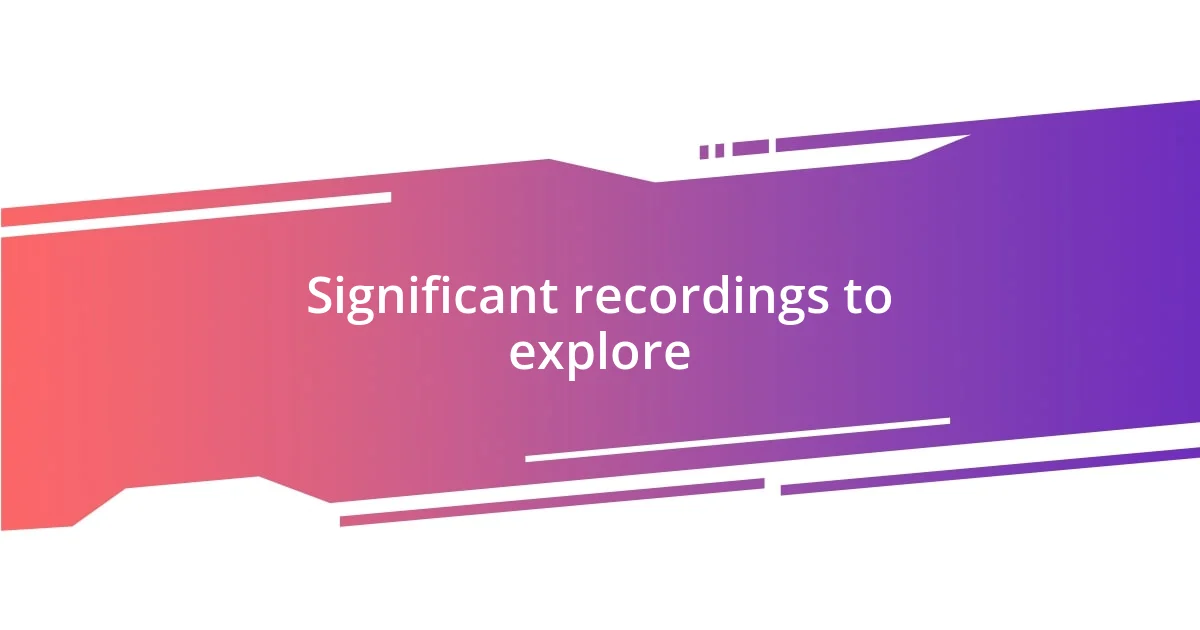
Significant recordings to explore
Significant recordings can illuminate the evolution of jazz like nothing else. One of my personal favorites is Miles Davis’s “Kind of Blue.” The first time I played this album, I was captivated by the seamless interplay of emotions and improvisation. It felt as though the music was conversing with me, revealing a sense of calm and profundity that lingered long after the last note. Isn’t it fascinating how a single album can encapsulate years of artistic innovation and experimentation?
Another essential recording that comes to mind is John Coltrane’s “A Love Supreme.” The spiritual depth and intensity of this suite resonate with me every time I listen. The way Coltrane weaves his saxophone lines together creates a narrative that feels almost sacred. I often find myself reflecting on my own journey through life, recognizing how music can serve as a mirror to our inner experiences. Have you ever had a piece of music that made you reflect deeply on your own path?
Then there’s Ella Fitzgerald and Louis Armstrong’s “Ella and Louis.” Their collaboration is a delightful blend of playful interaction and undeniable chemistry. Listening to their rendition of “Summertime” evokes vivid memories of summertime evenings, where laughter and warmth fill the air. It’s a timeless recording that showcases the beauty of vocal jazz and the magic of two legends coming together. What can be more captivating than the sound of two iconic voices intertwining in a perfect harmony? Each of these recordings not only captures jazz’s rich history but also invites us to explore our individual experiences with this ever-evolving genre.
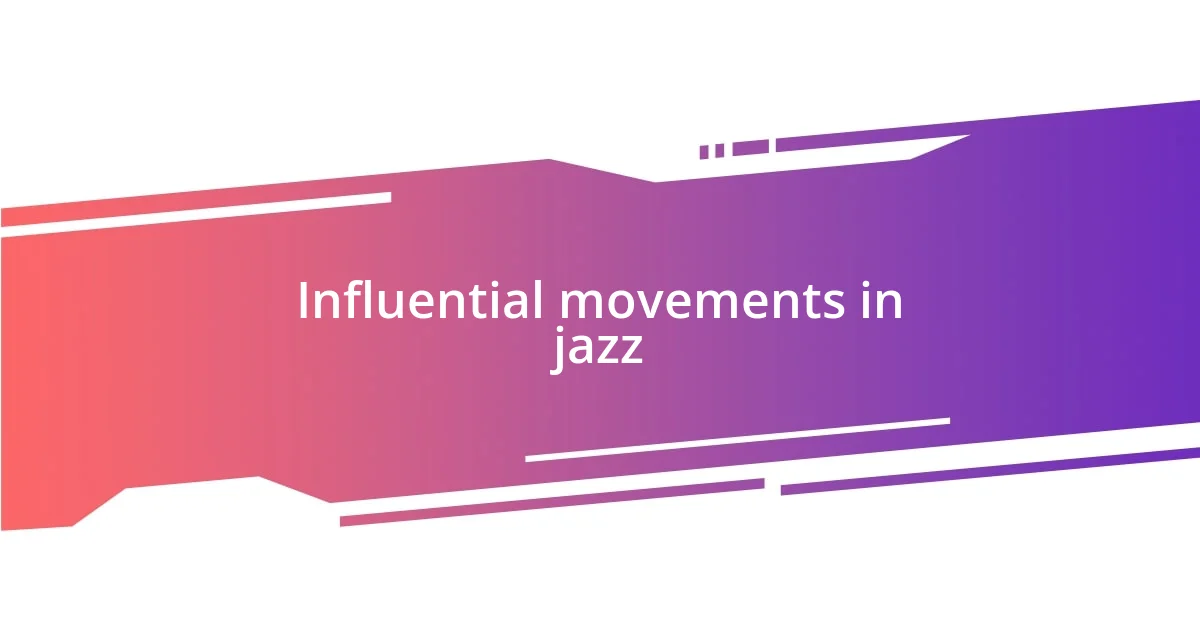
Influential movements in jazz
The evolution of jazz is marked by several influential movements that have shaped its vibrant tapestry. One of the most notable is bebop, which emerged in the 1940s. I still remember the first time I tried to wrap my head around Charlie Parker’s fast-paced improvisations; it felt like my brain was racing just to keep up! Bebop was not only a departure from earlier swing styles but also a bold statement of artistry, pushing musicians to explore complex harmonies and rhythms.
As I delve deeper into jazz history, I can’t overlook the impact of modal jazz in the late 1950s. The first time I listened to Miles Davis’s “So What,” I was struck by how the absence of a rigid structure opened up new avenues for expression. It was like stepping outside for the first time and breathing in fresh air—the music felt expansive and free. This movement prioritized improvisation over fixed chords, allowing artists to experiment in ways that truly transformed jazz.
Free jazz, which sprang forth in the 1960s, deserves its moment in the spotlight too. I recall a late-night jam session where the group explored this uncharted territory; it was exhilarating yet a bit intimidating. The spontaneous, often chaotic nature of free jazz challenges traditional boundaries and encourages musicians to embrace raw emotion. As I immersed myself in this genre, I found that it mirrors the unpredictability of life itself, full of unexpected twists and deep, unrefined expression. Isn’t it amazing how these movements can reflect not just musical trends, but the human experience as a whole?
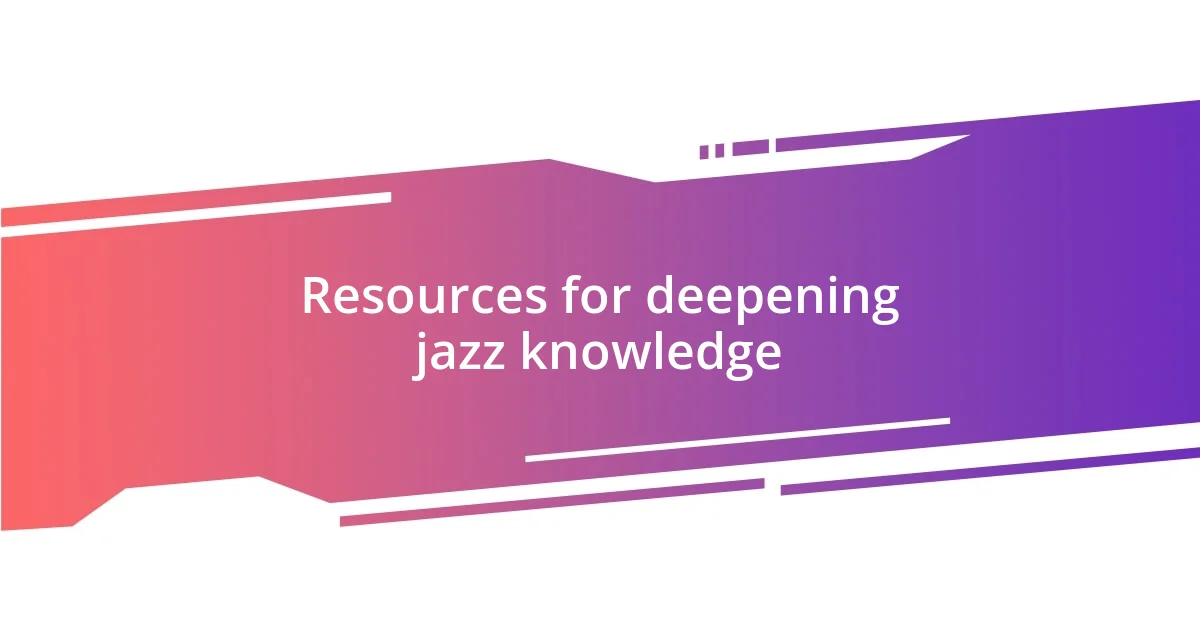
Resources for deepening jazz knowledge
Resources abound for deepening one’s jazz knowledge, and they can take many forms. One of my favorite discoveries has been exploring documentaries, such as “Jazz” by Ken Burns. Watching this series provides a riveting chronicle of jazz’s evolution, and I often find myself pausing to jot down names and albums that I want to explore further. Have you ever felt that rush of excitement when a documentary opens your eyes to artists you’ve never heard of?
Books are another fantastic resource. I cherish “The Jazz Book” by Joachim-Ernst Berendt, which serves as a comprehensive introduction to key figures and styles in jazz. It’s like having a knowledgeable friend guiding you through a captivating narrative. There were moments when I’d read about a particular musician and then rush to find their recordings just to hear their signature sound. Isn’t it rewarding to connect the dots between written history and the music itself?
Online platforms can also be a treasure trove for jazz enthusiasts. I often find myself diving into curated playlists on streaming services, which introduce me to gems I might have missed otherwise. These playlists often inspire me to rethink the connections between different eras and styles. Just last week, I stumbled upon a playlist celebrating 1950s hard bop, and it reignited my appreciation for that raw, energetic sound. How often do you explore music through the context of its surrounding culture? Each of these resources not only enrich my understanding but also help me connect more deeply with the jazz community at large.
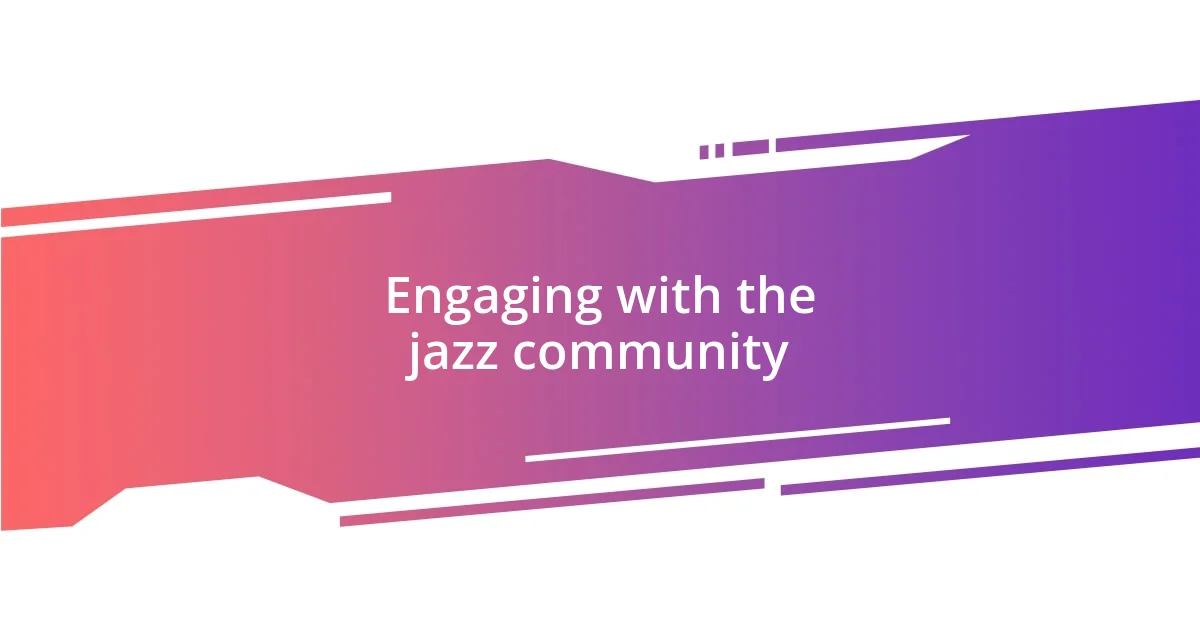
Engaging with the jazz community
Engaging with the jazz community has been one of the most rewarding experiences in my journey. Attending live jazz performances, whether in cozy clubs or bustling festivals, feels like entering a different world. I still vividly recall my first jazz festival—it was electric! Watching musicians who seemed to be in perfect sync with one another was nothing short of magical. The energy in the room was palpable, as if everyone was sharing an unspoken connection through the music. Have you ever felt that thrill when the band hits just the right note, and it feels like the entire audience is breathing as one?
Connecting with fellow jazz lovers has also deepened my appreciation for the genre. I remember joining a local jazz appreciation group, and the discussions we had were eye-opening. Everyone brought their unique perspective, and it was fascinating to hear how different artists resonated with each person. I often left those meetings feeling a renewed passion for exploring new sounds. Have you ever found that the conversations you have about music can change how you listen to it? It’s incredible how sharing our thoughts can unravel layers of complexity in jazz that you might not catch on your own.
Moreover, social media has opened doors to a global jazz community that feels incredibly inviting. I often participate in online forums, sharing insights on albums or discussing the latest releases. Just last week, I engaged in a lively debate about the impact of jazz on pop culture, and I was amazed at the breadth of knowledge others brought to the table. Isn’t it wonderful how technology connects us with people who share the same passion? These interactions not only enhance my understanding but also foster a sense of belonging within the vast and vibrant world of jazz.
